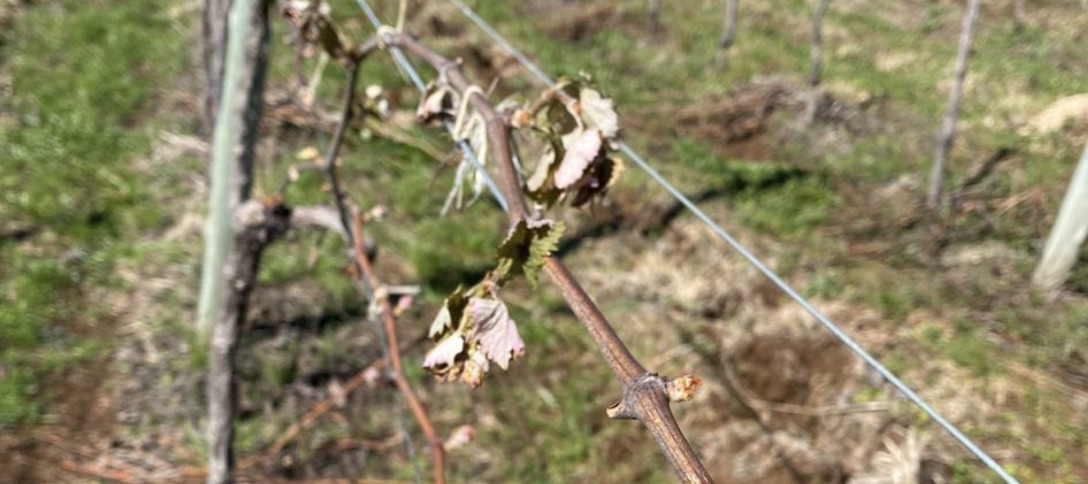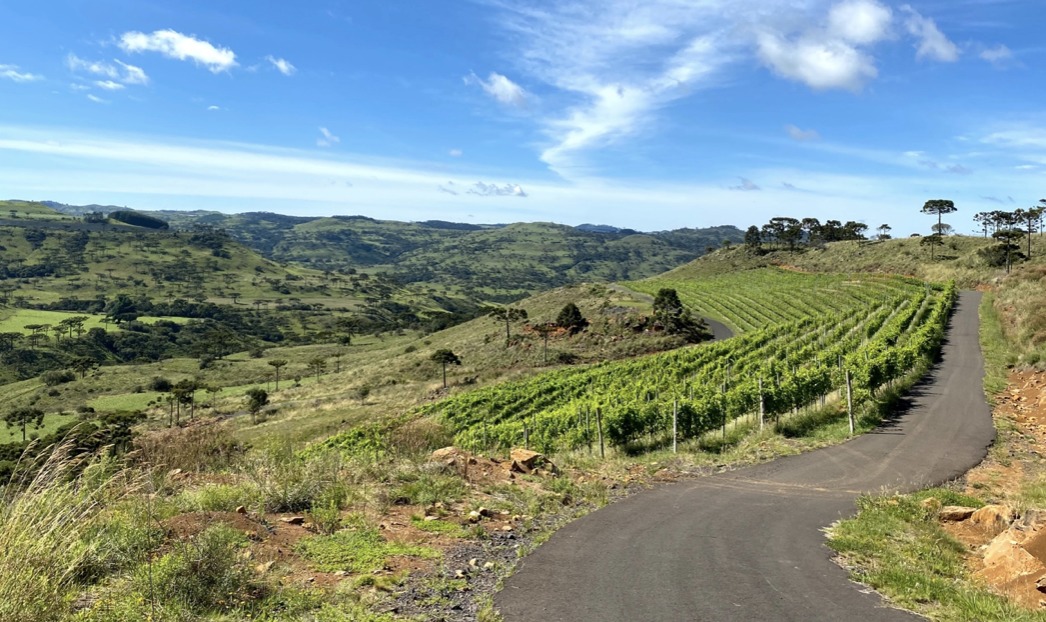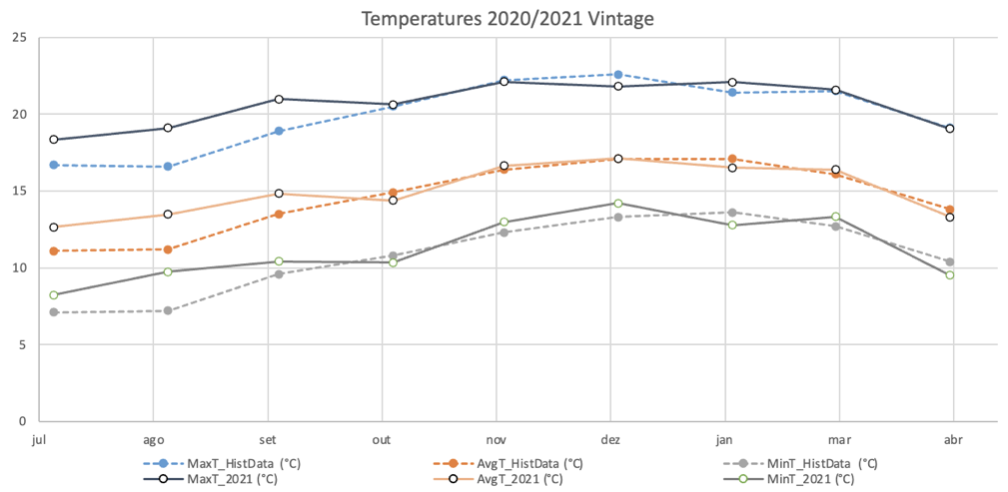How was the 2021 vintage of the Serra Catarinense in Brazil? A mix of many vintages in only one if we listen to Eduardo Bassetti from Villaggio Bassetti. As he and many other local producers report, it was a challenging vintage because of the inconsistency of the weather during the whole season. But wouldn’t this be the new paradigm coming from climate change?
2021 vintage report from the Serra Catarinense, Brazil
If 2020 was a fantastic and historic harvest in Serra Catarinense, 2021 was marked by several climate challenges in practically all phases of the vine cycle. Challenges will probably be the rule from now on because of climate change, which was so discussed in the media in recent months due to the IPCC — Intergovernmental Panel on Climate Change – report.
The key points in the 2020/2021 vintage in Serra Catarinense:
Above-average temperatures in August and September (between 1.5 to 2 degrees Celsius above average) dictated the bud break in most varieties. In the rest, temperatures were within the average for the region.
Black frost occurred on August 24th, with temperatures reaching minus 5 degrees Celsius which harmed the early varieties that had already sprouted. Maikely Paim, Leone di Venezia winemaker, noted that this frost specifically ended up harming the Rebo, Gewurztrazminer and Refosco varieties, as some vineyards with losses of up to 80% of the total.

Late frosts occurred on November 4th and 5th, and November 17th, with specific losses for late-ripening varieties (such as Montepulciano) at some wineries, such as Leone di Venezia.
Rainfall was below average between August and November, with normalization in December (that even helped the cycle) but with excesses of rainfall during the maturation phase. Veraison started earlier than in the previous year’s harvest. According to Eduardo Bassetti Pinot Noir began to change its colour on 20th December, three weeks earlier than normal.
There was excess rainfall in January with more than 200mm falling between January 17th and 30th. Early-ripening varieties experienced some losses due to this rainfall, but late-ripening varieties weren’t affected.
Most varieties continued with their early ripening, and Eduardo Bassetti reported his earliest harvest on record (picking Pinot Noir on 22nd February) as did Leone di Venezia (picking their Gewurztraminer in January!)
From the middle of February to the end of April, the volume of rain fell below the historical average, which avoided problems for the maturation of the late varieties, such as Montepulciano, Cabernet Sauvignon, Merlot, Garganega, Syrah. Montepulciano even reached between 26 and 27 degrees Brix.
So, what can we expect from Vintage 2021 in the high altitude wines of Santa Catarina?

In general, these early varieties (Pinot Noir, Gewurztraminer) will be lighter with less structure and lower alcohol content.
There will also be greater acidity, lower alcohol content, and less structure in white wines. However, the later ripening red varieties will are showing a similar structure and concentration as normal.
Thanks to Eduardo Bassetti and Joelmir Grassi from Villaggio Bassetti, Maikely Paim from Leone di Venezia and Nei Rasera from Villa Francioni.

